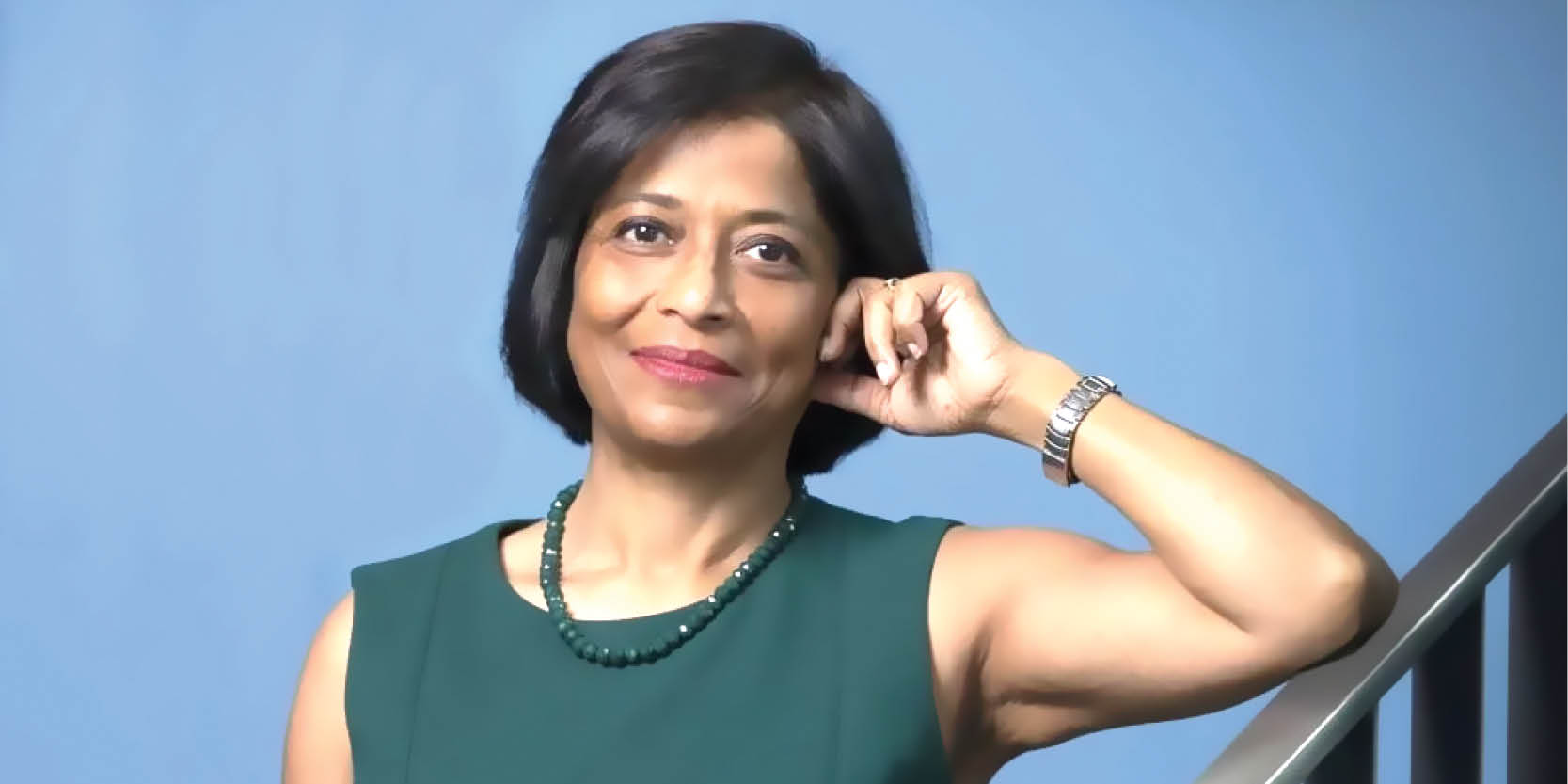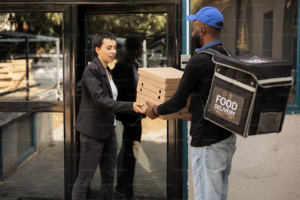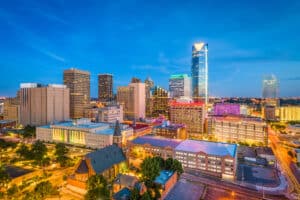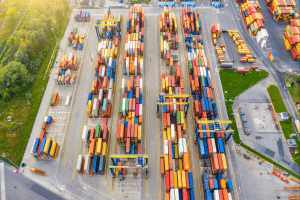A conversation with Dr. Joyeeta Gupta, outgoing Co-Chair, the Earth Commission, and Professor of Environment & Development at the University of Amsterdam. She specializes in resource conservation, biodiversity, and Climate Change challenges in, and in relation to, developing countries. She was co-chair of the United Nations Environment Programme’s (UNEP) Global Environment Outlook-6, Commissioner in the Global Commission on the Economics of Water.
You are the first person of Indian origin to be awarded the prestigious Spinoza Prize, colloquially referred as the Dutch Nobel Prize. Baruch De Spinoza, the philosopher, famously said the key to learning is to understand because understanding is what makes us free. How do you think in today’s world, spatial technology, especially modeling and visualization, helps people understand better about climate change and other pressing issues that concern us all?
Spatial technology has both pros and cons. It can open up your mind because you can look at what’s needed. For instance, in the case of agriculture it can tell us about the optimal amount of water or fertilizers that are needed for growing specific plants in specific areas. In that way, technology solutions enable us to understand how to make the future more sustainable.
However, there are underlying assumptions in all technologies, which can be for good or for worse. Such technologies may enable an assessment of the quality of soil per km2, but may not actually generate information on social inequality per km2 thus creating a bias if this information is used for policies.
Another example: the response to a particular query on Google or any other platform regarding Climate Change would depend a lot on your interests and the algorithm may completely push you in one direction. If you enter the query, what are the facts on climate change, then the response could be based on facts emerging from IPCC. However, if you tweak the question differently, you may get sucked into the vortex of misinformation by climate change skeptics and denialists.
The prevailing assumptions and scenarios play a key role. An old but classic paper by Jyoti Parekh in the 1990s questions the assumptions developed in Global North-based scenarios that did not account for Global South interests.
The problem of energy is another factor. Every technology intervention, be it smart agriculture or AI, requires some form of energy. Even for renewable energy we need a lot of energy and rare earth metals and minerals to make the equipment and batteries. So the human dependence on energy is not quite straightforward; we can make it partly renewable but it is difficult to make it circular.
As the co-author of the 2007 IPCC report, the recipient of the Nobel Prize for Peace along with Al Gore, you stressed on how climate change is becoming a big hazard and what needs to be done. 2023, as we know, was the hottest year in all of recorded history. In this context, how crucial is climate governance, particularly for developing countries?
Since 1998, what worries me is that for a long time, developing countries thought that climate change is a northern political issue and that the impacts would happen much later. They did not realize that they would be seriously affected by climate change, not just in the future, but also now and possibly in the past. They have thus not worked with scenarios – what do we do if the global North does not help us, or does not reduce its emissions fast enough.
Climate change is already here and it is hugely problematic for a country like India. Due to increasing global warming, the evaporation rates and glacial melting increase which put a lot of stress on water resources, and requires judicious resource use.
The key here is to reconcile our energy consumption and development patterns in such a way that we don’t repeat the same mistakes that the global North did.
The Global North production and consumption patterns should not be a goal that developing countries should aspire to. Instead of solely focusing on narrow parameters and metrics are concerned solely with the transition from a low income to a high income country and mirroring the development patterns in the west, the developing countries should focus on better healthcare, better well-being, and more integrated societies.
Cities in the global South have high air pollution leading to respiratory diseases and lung problems. This is the price that has been paid for haphazard development.
More use of a better public transit system and making it friendly to children and the elderly can help reduce the pollution burden, the costs, the energy needs as well as foster a more inclusive society.
For example, in the Netherlands, public transport is used by the elderly who cannot drive anymore as well as children. The system has been designed also keeping them in mind. The roads and the pavements have been constructed for cycling. But in a hot country like India, cycling may not be a feasible option. So there are complexities too.
A lot of people think that the circular economy is the solution to climate change, but it is not. Let me say it upfront, energy is not circular. It dissipates.
Our food systems are not circular. Some metals such as steel can be recycled, but medicines such as antibiotics or plastics or the textile industry can’t get circular. We need to promote a circular economy, while realizing that it is not sufficient for living within our environmental means.
For all countries of the world, moderate consumption and equitable, inclusive sharing of resources is the hope.
“Mobilizing scholars, policymakers and NGOs to think of how best different priorities can be integrated is critical to finding the right context-relevant solutions. Visualization enables us to see something about the social indicators, not just soil quality, which can be mapped through remote sensing.”
A lot of countries today are witnessing multi-pronged climate crises and increased disasters, ranging from desertification on one hand to rising sea levels and risk of submerging on the other. It is leading to population dislocation and acute loss of livelihoods. There’s a need for a more participative approach. What can decision-makers do to adapt data-based insights to craft innovative grassroots strategies and solutions?
The global West needs to rapidly reduce greenhouse gas emissions, which basically means that the fossil fuel has to be left underground. While the West needs to do it practically overnight, the global South has to avoid new fossil investments within the next 10-15 years and phase out fossil fuel use as soon as possible.
It is a big challenge. There are battery run vehicles in some Indian cities, but they are charged using thermal energy. So for countries with ample sunshine, the next step should be to harness solar energy. India and the African countries need to prioritize this transformation and leapfrog into a new energy system.
Good quality public transportation is another piece in the puzzle. India luckily has a fairly good public transport network. It should be upgraded and made more renewable.
Mitigation is a very big issue. If countries in the global South don’t actively begin it now, then a few decades down the line we may have reached the point of no return, triggering tipping points in the climate system.
Gradually, there needs to be a shift towards a shared economy. In Amsterdam, for example, new buildings are telling owners that there’s no parking space for all cars and home owners need to share cars, cycles and other vehicles. India traditionally had a culture of sharing till the 90s. For mitigation, it is very important that we start reevaluating our old values.
We also need to think about water conservation and using products that use less water. In Australia, they’re moving from one nut to the other to save water. Thinking about more crop per drop becomes critical for the farming community.
There is a school of thought that says global south countries should focus more on poverty alleviation rather than on climate issues or energy transition. But these issues are increasingly getting interlinked to the extent that it’s no more an either/or choice. What role can mapping and visualization play to drive this message harder?
The argument that poverty, development, health and environment are competing issues is outdated. These are linked issues. Many health issues can be avoided if environmental issues are accounted for. Similarly, efforts to reduce poverty of develop new infrastructure may be wiped out by the impacts of climate change.
Poverty alleviation using fossil fuels, even for basic energy access, locks us into a future which is going to create bigger problems in the long run. The challenge before India and other developing countries is to decentralize renewable energy grids for the poor.
We need to create a system that makes it easier for people to learn how to maintain and fix them as well. The skills and the training necessary for it is not really complicated, and India has an advantage with in-house knowledge and a vast talent pool of engineers. And in all this, we need to ensure good demand side management.
Mobilizing scholars, policymakers and NGOs to think of how best different priorities can be integrated is critical to finding the right context-relevant solutions.
Visualization enables us to see something about the social indicators, not just soil quality, which can be mapped through remote sensing, etc.
Visualization processes need to develop further to not only show environmental challenges, but also socio-economic challenges to be truly useful for policymaking. This can enable social opportunities to be equitable through access to quality education, healthcare etc.
Are we at a standpoint to achieve the Paris Agreement goals before 2030?
The window of actually achieving 1.5 C target is closing very fast. We need to race to achieve it. Once it is crossed and a tipping point is triggered then anything can happen. The main reason we have to race now is because for the last 35 years, we took it easy.
The Himalayas are melting fast, and if they keep melting the way they are now, there will be heavy flooding first and then there’ll be no water. While I am primarily blaming the developed countries for slow action, the developing world needs to come together.
They need to assess what can be done, what needs to be done and how this can be mobilized domestically. In the international negotiations they need to cooperate better to put pressure on global North countries.
We have to urgently reduce their dependence on fossil fuels. This is necessary for the future of all our children.









